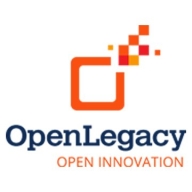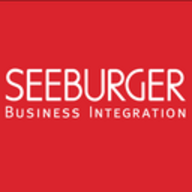

SEEBURGER Business Integration Suite and OpenLegacy are competitive business integration products. SEEBURGER has the advantage in deployment and support, whereas OpenLegacy stands out for its innovative features.
Features: SEEBURGER Business Integration Suite offers robust integration capabilities, enabling seamless coordination across multiple systems with powerful data transformation tools. It supports complex EDI requirements with ease, ensuring reliable data exchange. The platform is platform-independent, providing flexibility and adaptability. OpenLegacy excels with its flexible architecture, allowing rapid API creation, especially beneficial for enhancing legacy systems. Its open-source nature promotes innovation and scalability. The ease of creating APIs quickly allows for greater technology adaptability.
Room for Improvement: SEEBURGER could enhance its pricing model to accommodate smaller businesses and introduce more user-friendly tools. Its extensive feature set might also benefit from simplified user interfaces for less technical users. More detailed and customizable reporting features might improve user experience. OpenLegacy may need to expand its support structure to match larger enterprise needs. Enhanced security protocols could also be beneficial to compete effectively in regulated industries. Ensuring long-term support and scalability for enterprise-level clients could further cement its market presence.
Ease of Deployment and Customer Service: SEEBURGER offers comprehensive deployment options backed by responsive customer service, facilitating smooth implementations. Its support team assists with troubleshooting efficiently, ensuring minimal downtime. OpenLegacy provides a simplified deployment process, reducing technical overhead and quickening setup times. Its customer support empowers clients with effective solutions, though its offering may not be as extensive as SEEBURGER’s.
Pricing and ROI: SEEBURGER Business Integration Suite may involve higher initial costs, but its long-term ROI is significant due to its extensive toolset. The investment can lead to higher returns with comprehensive solutions that develop over time. OpenLegacy presents a cost-effective entry, appealing to businesses seeking quick deployment and innovation without large upfront expenses. Its pricing strategy caters to rapid growth and modern tech adaptation, promising a progressive ROI.
| Product | Market Share (%) |
|---|---|
| SEEBURGER Business Integration Suite | 0.8% |
| OpenLegacy | 0.5% |
| Other | 98.7% |

| Company Size | Count |
|---|---|
| Midsize Enterprise | 4 |
| Large Enterprise | 38 |
OpenLegacy helps organizations quickly launch innovative digital services by extending their core back-end systems to the web, mobile and cloud in days or weeks versus months. Our microservice-enabled API integration and management software quickly reduces project backlog by automating and accelerating microservices and API creation, deployment, testing and management from core applications, mainframes and databases. Together, business and IT teams can quickly, easily and securely meet consumer, partner or employee demands for digital services without modernizing or replacing core systems, and without special programming skills or invasive changes to existing systems and architectures. OpenLegacy is designed for ongoing management of microservices APIs and is based on open standards, so our software plays nice with your current technology stack and supports agile, DevOps and continuous development. Learn why leading companies choose OpenLegacy at www.openlegacy.com.
With SEEBURGER’s experienced team behind you, and SEEBURGER BIS as the foundation of your hybrid integration strategy, you’re prepared for whatever comes your way – even as your business gains complexity and integration requirements increase.
SEEBURGER Business Integration Suite (BIS) is a unified, agile, secure and scalable platform that solves integration challenges across your business and ecosystem, so that you can make valuable connections between clouds, applications and people.
Our platform provides integration across all scenarios, including B2B/EDI, MFT, API and ERP on-premises, in the cloud and hybrid, in addition to expert support that is unmatched in the industry for your simplest to your most complex integrations.
Your APIs are likely multiplying quickly, and if you’re looking for a solution to manage, secure and scale them properly, you get all of the benefits and less of the hassle with our API Management toolkit.
Bring us your toughest B2B/EDI challenges. We help with difficult onboarding and partner connections, and will save you time and effort to complete complex projects. We make B2B easy with pre-packaged, re-usable content and automation capability, so your team can make the connection, and move on to the next mission.
Simplify your workload with our iPaaS solution. SEEBURGER iPaaS enables your team to save man-hours connecting data, applications and systems, by letting us handle all the time-consuming platform operations. We cover maintenance, updates, security, scalability and more.
Did you know that without managed file transfer (MFT), your company is at greater risk for a data breach? It’s as simple, and as dangerous, as that. The security and control you get with our centralized, easy-to-use solution ensures less risk for the company, and more sleep at night for you.
Our customers say it best! Check out our reviews you’ll see that SEEBURGER’s rock-solid, built-from-the-ground-up platform, is combined with an expert team, and stellar service. We power your connections, future-proof your vision and give you a competitive edge.
We monitor all API Management reviews to prevent fraudulent reviews and keep review quality high. We do not post reviews by company employees or direct competitors. We validate each review for authenticity via cross-reference with LinkedIn, and personal follow-up with the reviewer when necessary.